
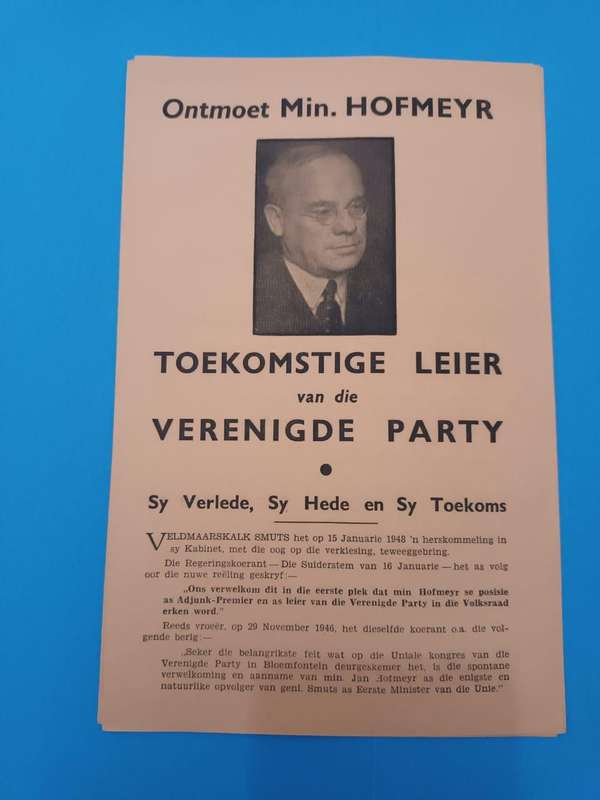
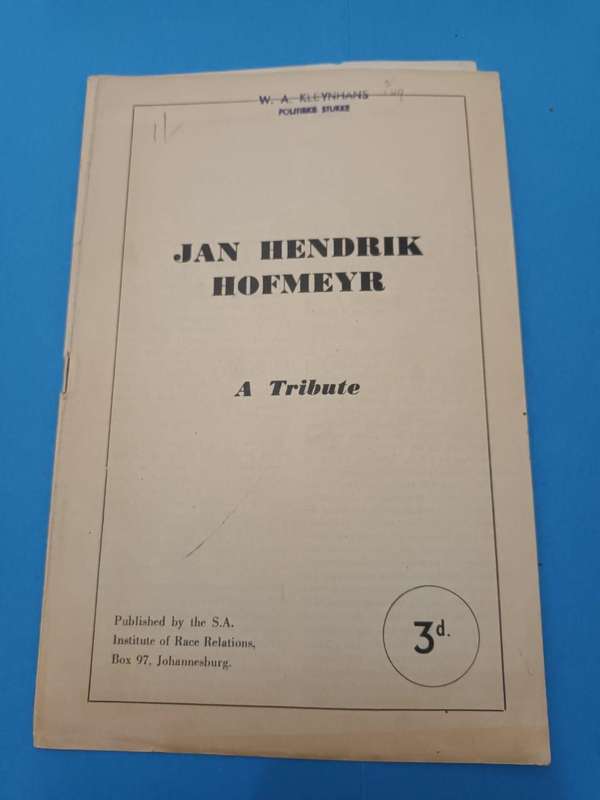
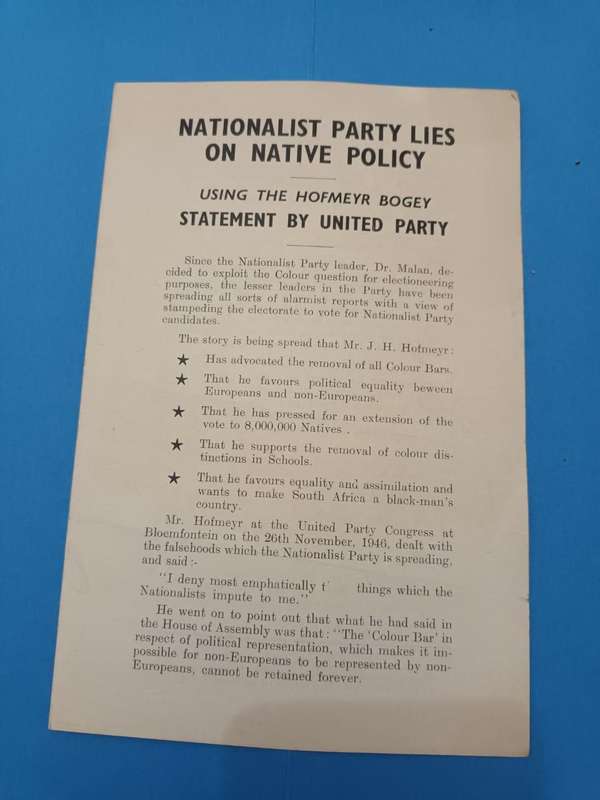
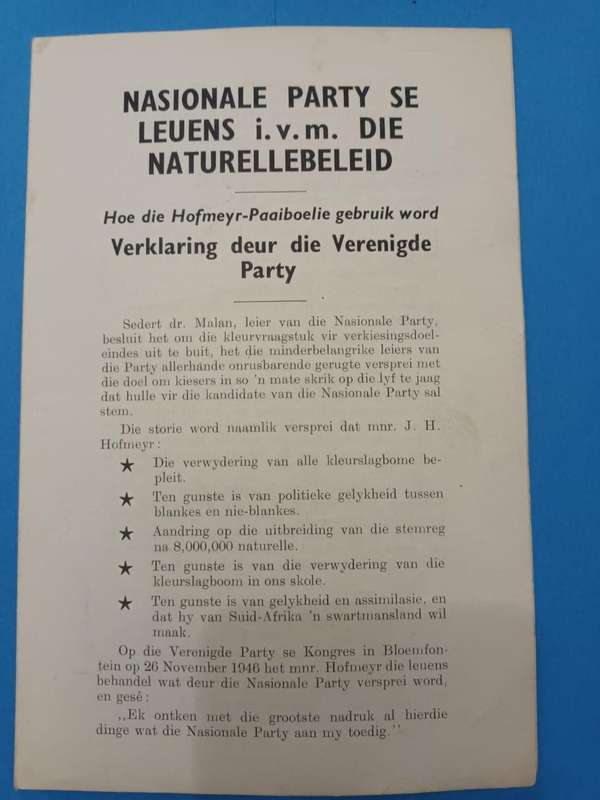
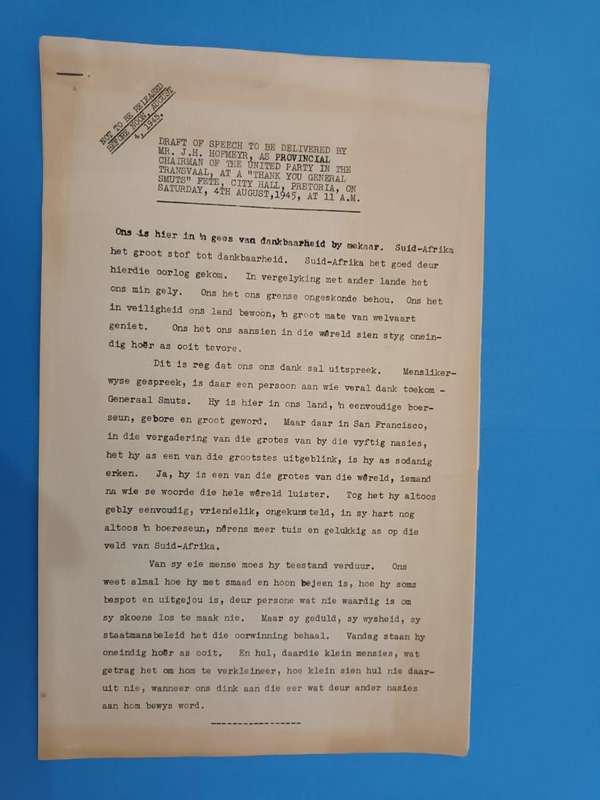
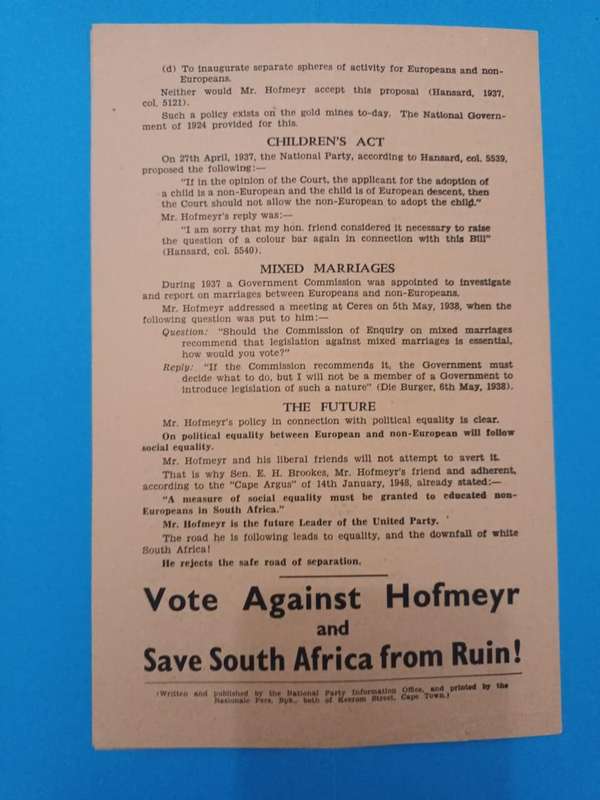
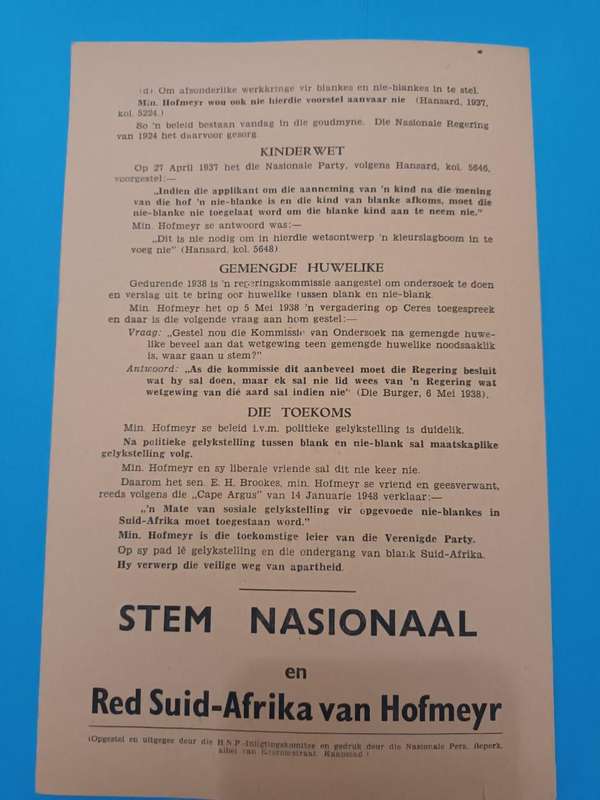
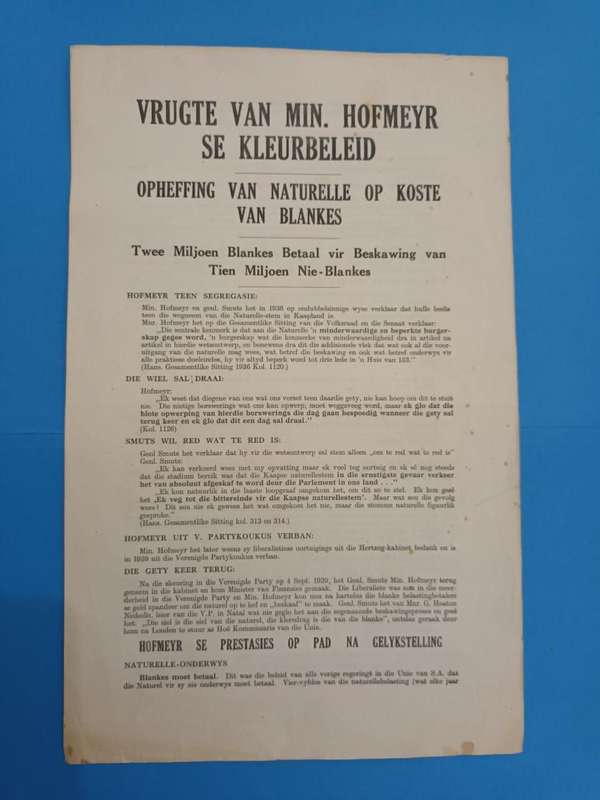
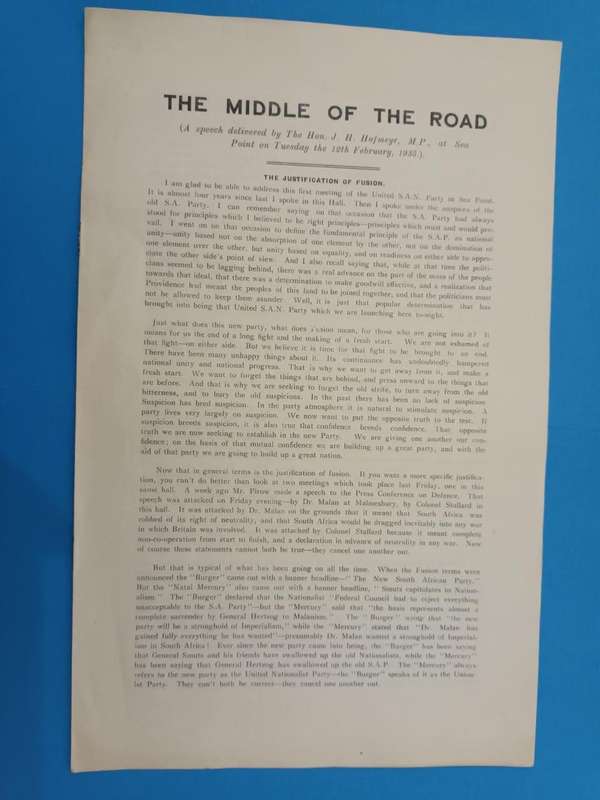





Jan Hendrik Hofmeyr: South African liberal politician. 7 ephemeral items
Check my rate
| Main centres: | 1-3 business days |
| Regional areas: | 3-4 business days |
| Remote areas: | 3-5 business days |















| Main centres: | 1-3 business days |
| Regional areas: | 3-4 business days |
| Remote areas: | 3-5 business days |
A collection of 7 ephemeral items, all relating to Jan Hendrik Hofmeyr. Some are favorable toward him; other oppose his policies.
(1) Jan Hendrik Hofmeyr: A Tribute. Johannesburg: S.A. Institute of Race Relations, [1949] Self-wrappered, saddle-stitched pamphlet, 8 pages. Light browning, and little foxing. Small hand-stamp of A. A. Kleynhans (presumably, the academic). Comprises tributes by Donald B. Molteno, J.D. Rheinallt Jones, and D. D. T. Jabavu. Molteno writes: 'Events since 1910 seem to indicate that the traditional liberalism of the former Cape Colony never struck deep roots in the political consciousness of the Europeans there. One by one the leading protagonists of Cape liberalism have gone from us - Sauer, Merriman, Jagger, Burton, Rose-Innes, F.S. Malan. And now the last outstanding representative of that tradition ... has also been taken away.
(2) Meet Mr. Hofmeyr: Future Leader of the United Party: His Past, His Present and His Future. Cape Town: National Party, [1948] 4-page leaflet. The rising National Party's opposition to the liberal politics of Hofmeyr. Small hand-stamp of A. A. Kleynhans.
(3) Ontmoet Min. Hofmeyr: toekomstige leier van die Verenigde Party: Sy Verlede, Sy Hede en Sy Toekoms. Cape Town: National Party, [1948] 4-page leaflet. Afrikaans-language equivalent of #2.
(4) Nasionale Party se Leuens i.v.m. die Naturellebeleid: Hoe die Hofmeyr-Paaiboelie gebruik word: Verklaring deur die Verenigde Party. / National Party Lies on Native Policy: Using the Hofmeyr Bogey: Statement by the United Party. Pretoria: United Party, [c. 1947] 4-page dos-a-dos leaflet (English and Afrikaans each have two pages).
(5) 'Draft of Speech to be delivered by Mr. J. H. Hofmeyr, as Provincial Chairman of the United Party in the Transvaal, at a "Thank You General Smuts" Fete, City hall, Pretoria, on Saturday, 4th August, 1945, at 11 a.m.' Foolscap, 4-page type-script, stapled. Paper browned. The speech is partly in Afrikaans; partly in English. Very scarce: evidently prepared for release to the Press on the day of the speech. Celebrates the end of the Second World War and the 'triumph over Nazism'. In particular, thanks Jan Smuts for his contribution to the war effort.
(6) J. J. Haywood, Vrugte van Min Hofmeyr se Kleurbeleid: Opheffing van Naturelle op Koste van Blankes: Twee Miljoen Blankes Betaal vir Beskawing van Tien Miljoen Nie-Blankes. Bloemfontein?: National Party, [c. 1948] Foolscap, 4-page leaflet. Paper browned and a little spotted. Expressing the shameless, barefaced racism of the National Party.
(7) Jan Hendrik Hofmeyr, The Middle of the Road (A Speech Delivered by the Hon. J. H. Hofmeyr, M.P., at Sea Point on Tuesday the 12th February, 1935.). Cape Town: United South African National Party, 1935. Foolscap, 8-page, self-wrappered pamphlet. Light browning. This speech justifies the 'fusion' of two political parties: a fusion that was not to last. This is the earliest item in this collection.
Considering its ephemeral character, this collection is in good condition. There are no major faults.
'Jan Hendrik Hofmeyr (20 March 1894 3 December 1948) was a South African politician and intellectual in the years preceding apartheid. In his lifetime he was regarded as one of the cleverest men in the country, and it was widely expected that he would eventually become Prime Minister of South Africa.
Smuts always regarded Hofmeyr as his political successor but his hopes of a continued legacy were smashed with Hofmeyr's untimely death.
'National politicians had hoped that Hofmeyr would sympathise with their aspirations for Afrikaner supremacy. They were disappointed
'Hofmeyr died in Johannesburg on 3 December 1948, almost six months after the National Party came to power with their slogan of apartheid.
'General Jan Smuts paid tribute to Hofmeyr both at the graveside, and on the evening before in a national radio broadcast. Of Hofmeyr he said:
'"Here was the wonder child of South Africa, with a record with which South Africa shows no parallel, who from his youngest years beat all records, whose achievement in a comparatively brief life shows no parallel in this land, and whose star at the end was still rising ..."
'His death was premature and to some extent caused by the heavy burden of all the work that Smuts had entrusted to him.
'Paton's seminal novel Cry, the Beloved Country is dedicated to his friend Jan Hendrik Hofmeyr. In 1964, Paton published a Hofmeyr biography.' (Wikipedia)